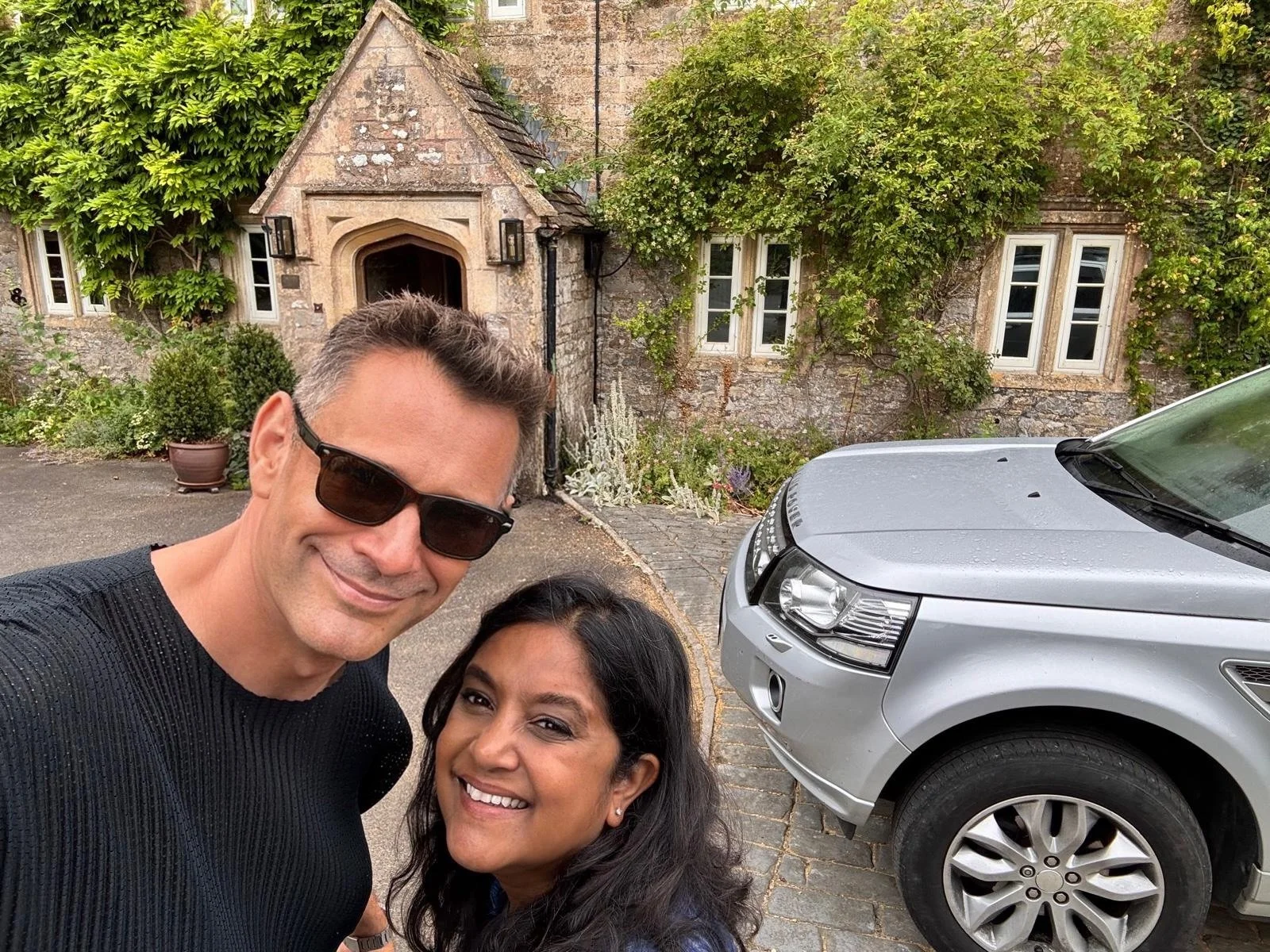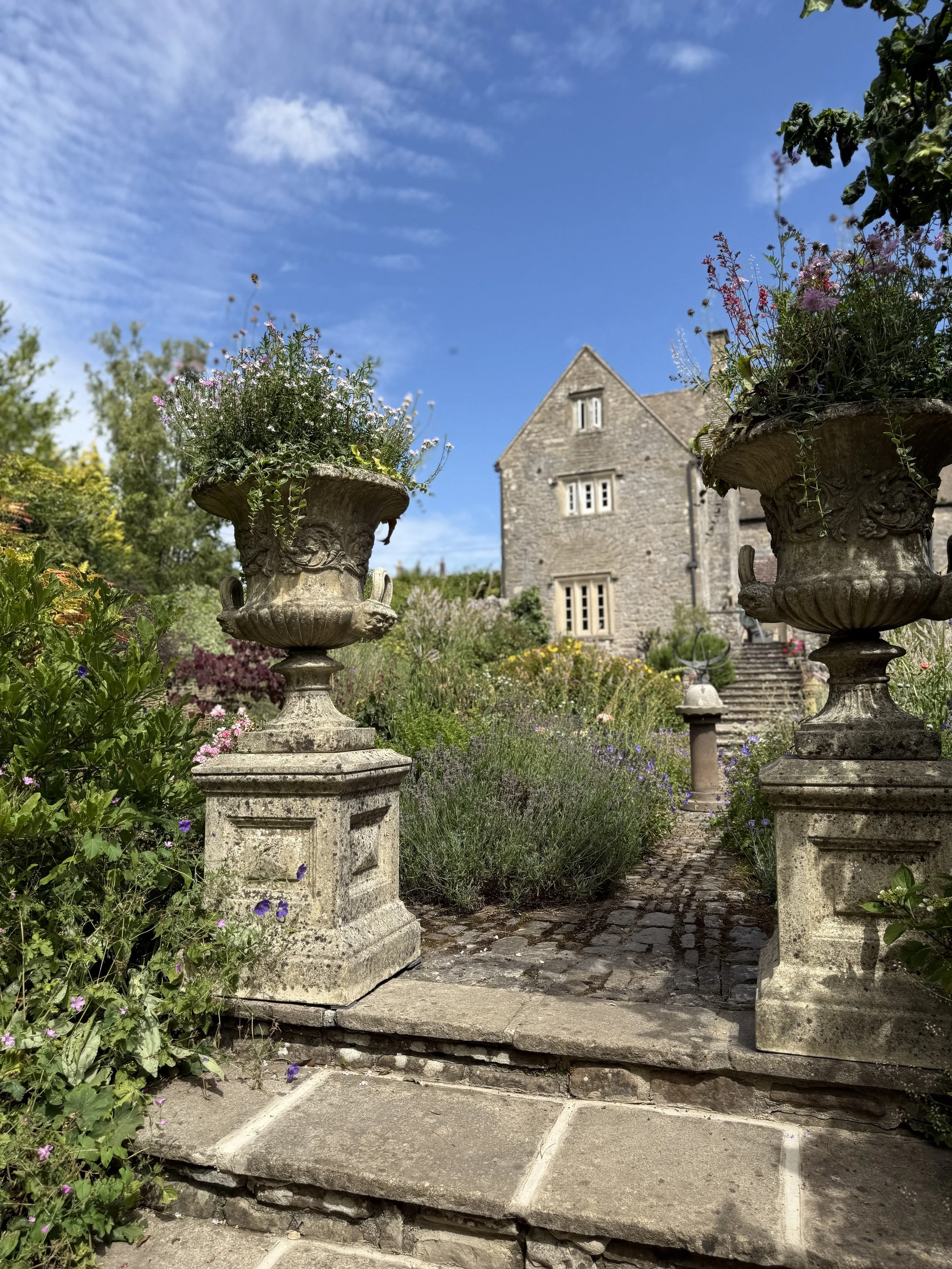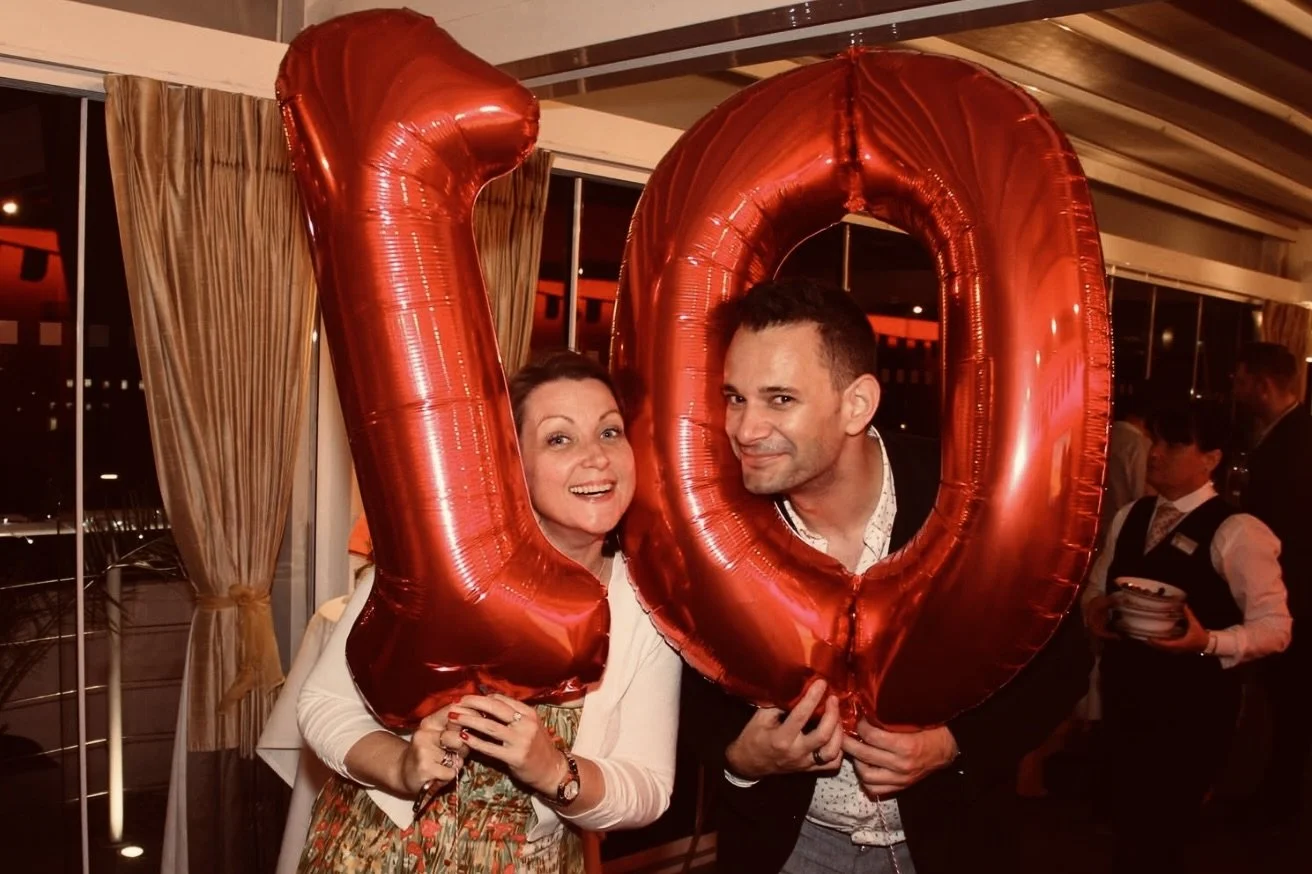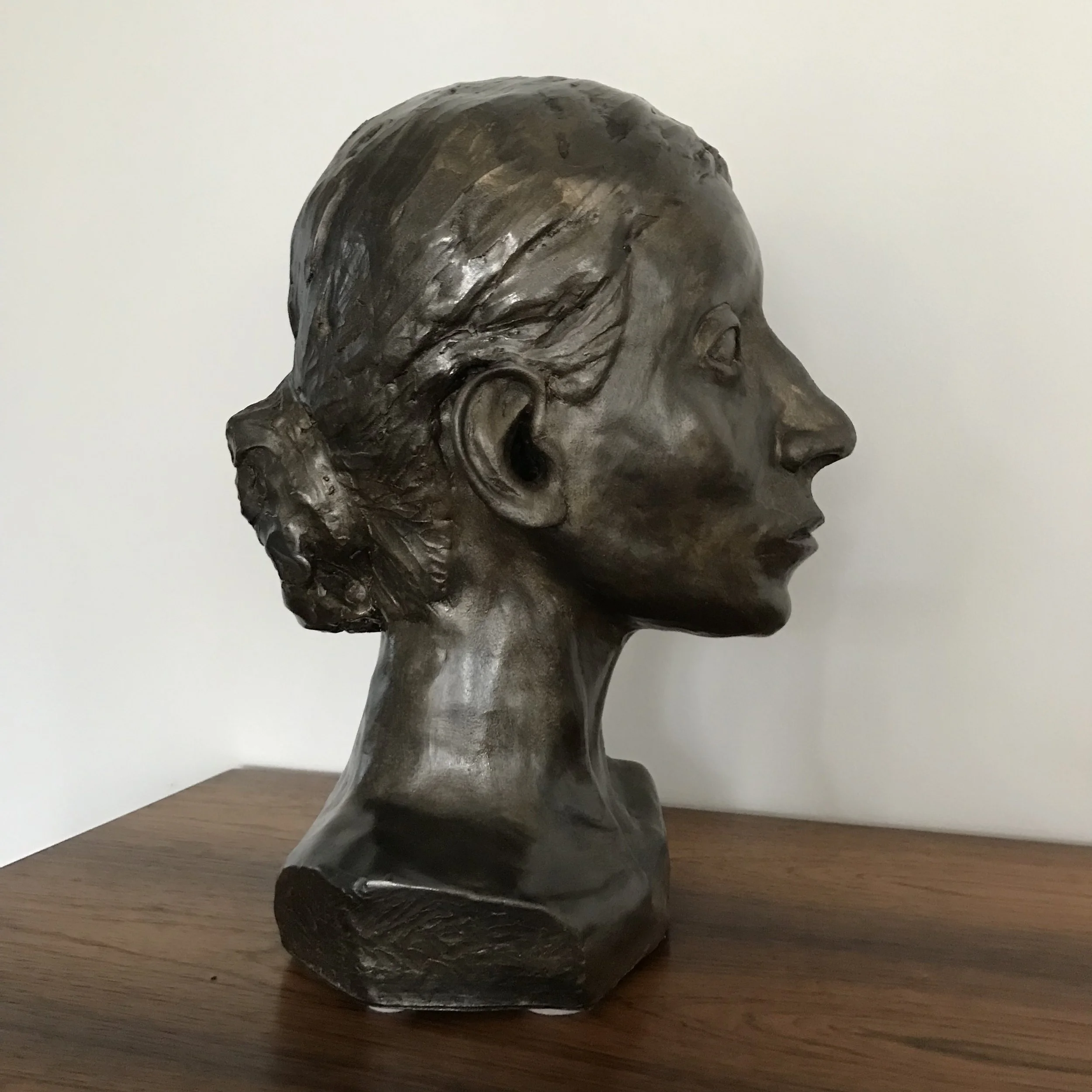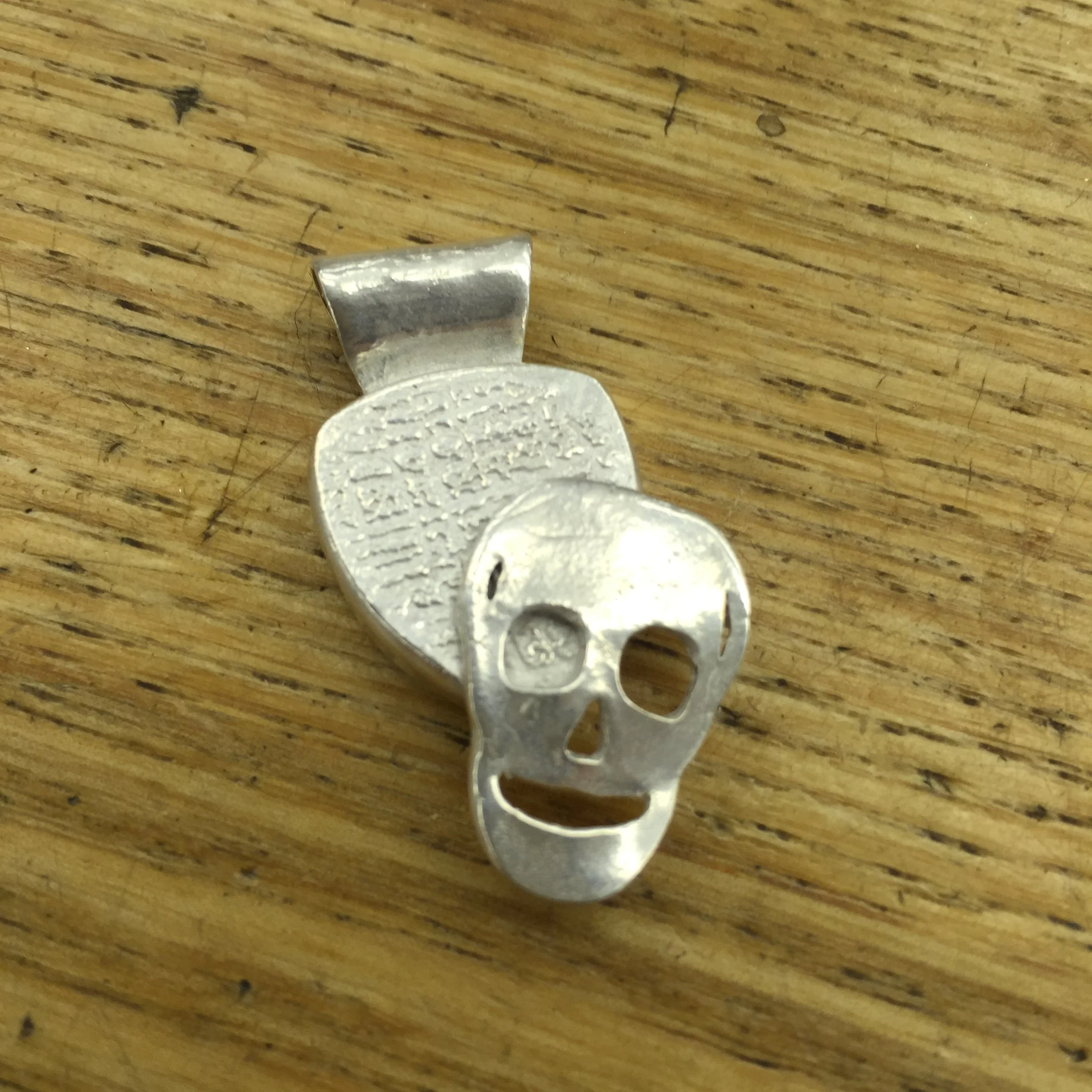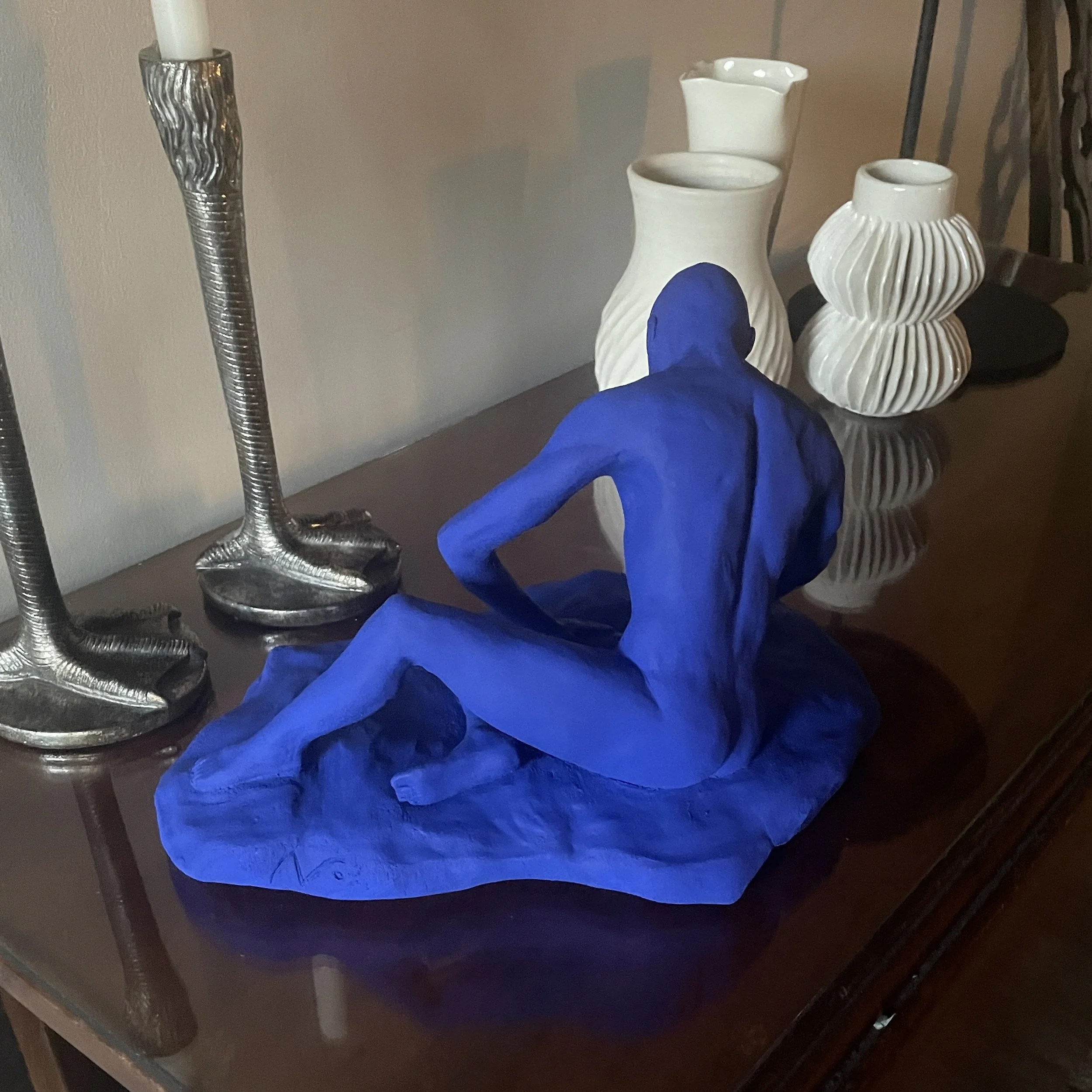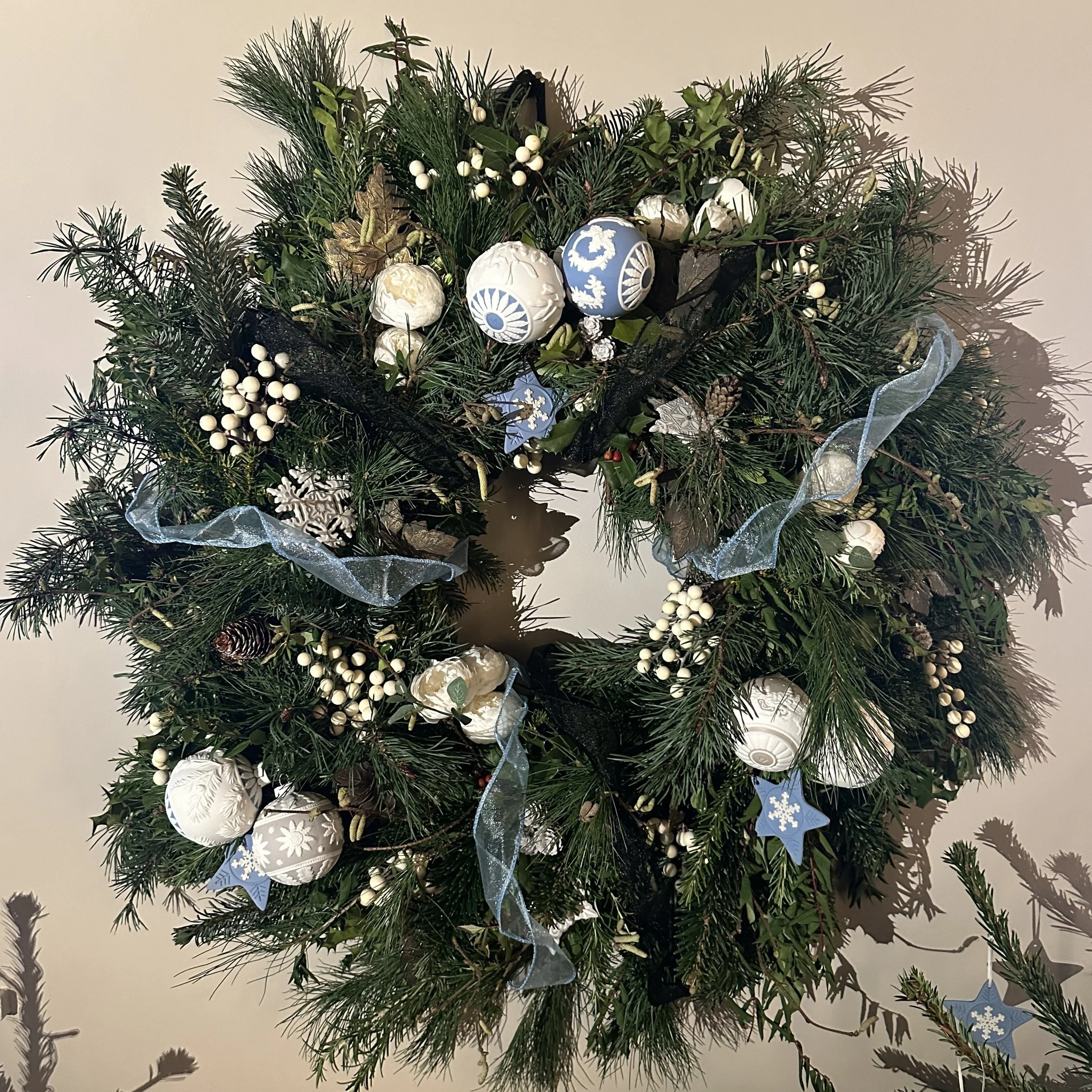Neil Crump — Founder, Asterion & Co.
Neil mid conversation with friends.
At The Old Vicarage in Leigh-on-Mendip, Somerset, Neil Crump has created more than a home — he’s built a living expression of his lifelong fascination with how people, ideas, and craftsmanship connect. With a background that spans biology, art, and communications, his story weaves together science’s curiosity, art’s creativity, and business’s precision.
Outside of work, Neil has always been drawn to making things by hand. Over the years he has explored glassblowing, jewellery making, painting and floristry, with a particular focus on ceramics — throwing, hand-building and sculpting in clay. These creative pursuits have been a constant thread, grounding him and shaping his appreciation for the beauty of craftsmanship.
After nearly two decades leading an award-winning healthcare communications agency in London, Neil chose a different pace of life — restoring a 16th-century vicarage and its gardens, and reimagining it as a place where people could learn, make, and connect. Asterion & Co. is the result — a home for Heritage-Inspired Learning™, rooted in a set of values about camaraderie, craftsmanship, regeneration, accomplishment and integrity.
We sat down with Neil to ask what drives him — and how his own journey shaped the philosophy behind Asterion & Co.
You’ve spoken about loving to bring people together — from dinner parties to courses in your home and garden. What, for you, makes a gathering feel genuinely alive?
When guests arrive at Asterion & Co., I share our values — not as rules to follow, but as an open invitation to live them together and help make the time here enriching for everyone.
What makes a gathering feel genuinely alive, especially as a host, is bringing together people who might not know each other and creating an environment where everyone feels comfortable in their own skin. When you centre things around food or a shared task, people relax. I like to connect people early, dropping in small introductions like “did you know so-and-so has a shared passion for…?” It sparks conversation.
The energy is like a beehive — I’m a beekeeper, and that gentle hum of bees working together feels the same as the sound of laughter and chatter from another room. That buzz of positive human interaction makes me happy.
Neil and architect, and friend, Nita Purtill at The Old Vicarage.
Many of Asterion & Co.’s collaborators are people you’ve met through chance conversations — in shops, markets, or over long lunches. What draws you to someone and makes you think, “they’re one of us”?
I’m drawn in first by what they make — I love beautiful things that carry heritage and a story. I’ve always been curious about how things come into being. I can usually sense within minutes if someone aligns with our values. I look for craftsmanship, integrity, and a natural warmth — they don’t have to be extroverts, most, like me, aren’t. I just ask questions and feel for their passion. When that spark’s there, I know we could create something wonderful together.
How do you build camaraderie among your team — gardeners, builders, hospitality members, makers — so that everyone feels part of something shared, not just employed?
It’s about encouraging the team to build each other up and be courageous in giving feedback in the moment — generously and respectfully. I want people to feel trusted to make decisions, even if that means making the odd mistake, which can always be fixed. I love creating teams that work effectively together, and that comes from respect and giving people autonomy.
You’ve always admired people who know their craft — but your own craft has shifted over time, from biology to sculpture to building a brand. How do you now define craftsmanship in your own life?
My dad instilled a strong work ethic in me — if you do something, do it well. For me, craftsmanship means having a strong aesthetic sense and the discipline to execute to the best of my ability, while always learning and improving. Attention to detail matters, but so does vision — setting a direction that others can share and believe in.
You hand-build and sculpt in clay, you curate courses, and you design experiences. In what ways does your creative process mirror that of an artisan at the wheel or bench?
My creative process is both divergent and convergent. I start by free-flowing — letting ideas collide and coalesce — then I narrow things down to something I can actually execute. I sometimes take on too much, but I’m a doer. I roll up my sleeves and get things done, aiming for something I can be proud of.
When you think about the workshops at Asterion & Co., what kind of learning moment makes you feel most proud — the technique mastered, or the sense of confidence it sparks in someone?
It’s all about confidence. Technique can always be mastered with practice, but it’s the feeling that matters — that moment when someone sets aside their inner critic and starts creating like a child again. That’s the magic.
The view up to The Old Vicarage from the kitchen garden.
Regeneration sits at the heart of Asterion & Co., not just horticulturally, but philosophically. How does the land here at The Old Vicarage mirror your own renewal after leaving London?
I love this place. I feel secure and content here. Leaving a difficult long-term relationship took courage, but it was regenerative. That decision created space for healing and clarity — a chance to rebuild a life that’s rooted, kind, and genuine.
Life in London had become fast and transactional, and I realised I wanted something more meaningful — built on genuine connection rather than pace or status. What I’ve built here is the opposite: a world that revolves around people who care for others. I want to create connection that endures through tough times.
In building Asterion & Co., you’ve restored more than a house and garden; you’ve revived old ways of learning and making. Why does that feel important now?
Modern life — the sound bite, the fast buck, the next dopamine hit — is unfulfilling. It kills the soul. Looking back at slower, more deliberate ways of living helps people feel grounded again. It’s about living well, making well, and working well.
You’ve spoken about wanting to help artisans elevate their practice and sustain themselves. How does that desire connect to your own belief in putting things — and people — back better than before?
I believe we should feel honoured to exist in this beautiful world. Suffering is part of life, but it can teach empathy if we let it. I’d rather not suffer, but it’s made me more human. The best artists and artisans often channel pain into creation. Asterion & Co. is about creating a positive space where teachers, guests, and my team can all flourish creatively — leaving richer than when they arrived.
Claire and Neil back in 2016, at the Aurora (now called Spectrum) 10th anniversary party.
You’ve built award-winning companies and built Asterion & Co. from the ground up. What kind of accomplishment feels meaningful to you now — and how has that shifted from your corporate years?
It’s hard work to build something that stands out — something people genuinely respect. I was proud of leading a healthcare communications agency with my friend and co-founder Claire Eldridge — an outstanding partner and phenomenal leader — that believed every patient should have access to the best care, and we worked with incredible innovations to make that happen. That business still thrives, and I feel like a proud father to it. What’s always mattered to me is helping others flourish — that hasn’t changed. Asterion & Co. is built on similar values: creating something where everyone involved can grow.
You often talk about “doing things well.” When did you first recognise that doing something beautifully could be as satisfying as doing it successfully?
Doing things well is doing things right. When you create something that makes your heart, soul, and mind sing, that’s beauty. It’s about effort, care, and sparking the senses.
The Asterion & Co. model blends creativity, teaching, and hospitality. Which of those elements gives you the deepest sense of achievement when it all comes together?
Creativity gives me the deepest sense of achievement. Working with talented people to shape a masterclass, adding the Asterion & Co. touches that make it special — that gives me real joy. It’s about sharing the pleasure of creativity with others.
You’ve built Asterion & Co. on clear values. How do you decide what or who aligns — and when to walk away from something that doesn’t?
There are always signals, both subjective and objective. If I have doubts about someone or something, I sleep on it. My subconscious processes it, and by morning I always know what feels right.
Neil in the glasshouse at The Newt, Somerset.
Having worked in global communications, you’ve seen how stories can be shaped. How do you ensure Asterion & Co.’s story stays honest — true to the place and the people behind it?
We never step away from our values. We’re authentic at all times — no puff, no pretence. Everything we do has to be evidence-based and true.
Looking back, which moments — professional or personal — have most tested your integrity, and how have they shaped the kind of leader you’ve become here?
Once, I worked with a multinational household-name client. We were overhauling their corporate website and had been prepaid £250,000 — unheard of at the time. But the client team was completely dysfunctional, and it was harming my staff. After confronting it three times, I realised they wouldn’t change, so we resigned the business and handed back the money. Procurement said we were the first agency ever to resign. They didn’t even have a process for returning funds. We needed the revenue but not at the expense of our people. That decision shaped me — integrity always comes before income.
And finally, what do you hope people feel when they leave Asterion & Co.?
In the end, Asterion & Co. is about more than workshops to pass on knowledge, or acquire or create lovely objects — it’s about people. The joy of connection, the beauty of skill, the comfort of doing things well. Every course, conversation and cup of coffee shared here is part of something larger: a living rhythm of creativity and care. What began as a personal renewal has become a collective one — a place where others can pause, learn, and feel part of something that lasts.
Some examples of Neil’s own creative pursuits…
Bust in clay with bronze surface treatment.
Glassblowing classes.
Hand built clay vessels.
Silver pendant made with silver clay.
Clay sculpture from life with cobalt blue (Neil’s favourite colour) paint treatment.
Floral arrangements.

